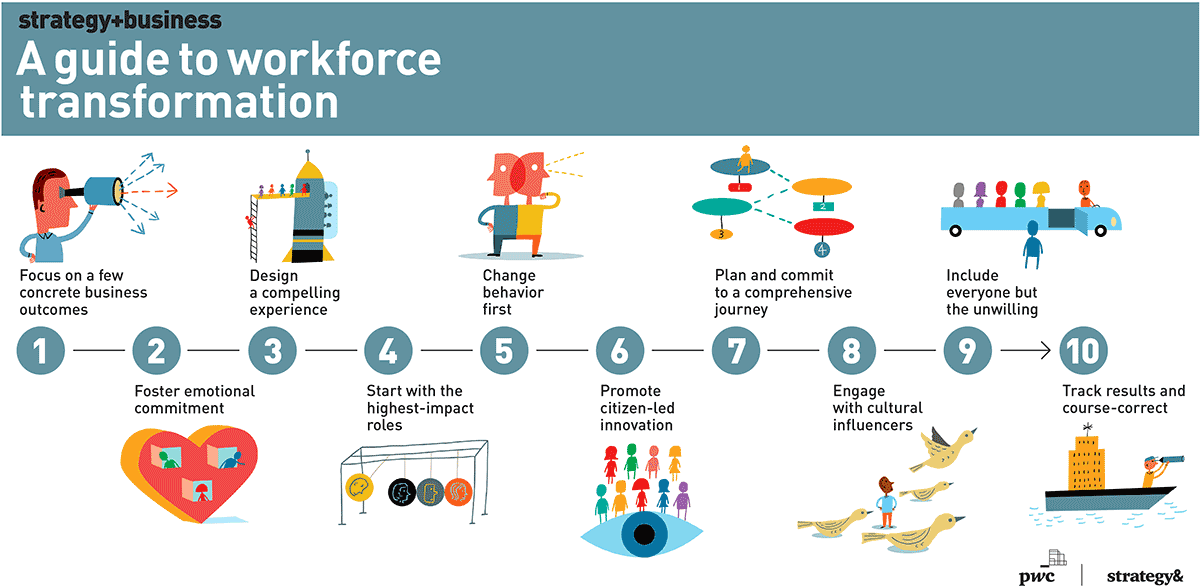Unveiling the secret recipe: Discover the transformative steps to reshape your workplace culture for unrivalled success.

Table of Contents
- Assess the Current Workplace Culture
- Define and Communicate Core Values
- Foster Clear and Open Communication
- Encourage Collaboration and Teamwork
- Invest in Professional Development
- Recognize and Appreciate Employees’ Contributions
- Promote Work-Life Balance
- Embrace Diversity and Inclusion
- Lead by Example
- Monitor and Adjust
- Conclusion
Workplace culture is crucial to any organisation’s success and overall well-being. A positive workplace culture fosters employee engagement, improves productivity, and enhances collaboration. On the other hand, a negative or toxic workplace culture can lead to high turnover rates, decreased job satisfaction, and hinder the organization’s growth. This comprehensive guide will outline practical steps to improve workplace culture, helping you create an environment that promotes positivity, productivity, and employee satisfaction.
Assess the Current Workplace Culture
Before embarking on the journey to improve workplace culture, it is essential to assess the existing culture, both its strengths and areas that need improvement. This evaluation will help you identify the starting point and develop a targeted plan for impactful changes.
Start by conducting a survey or anonymous feedback sessions to gather insights from your employees. This feedback can provide valuable insights into the current work environment, employee satisfaction levels, and areas of concern. Analyze the responses to identify common themes or patterns that highlight areas for improvement.
Additionally, evaluate existing policies and practices within your organization. Are they aligned with fostering a positive workplace culture? Do they support open communication and collaboration? Identify discrepancies and areas where policies can be adapted or improved to align with desired cultural values.
Define and Communicate Core Values
A strong workplace culture is built upon a foundation of well-defined core values all employees share. These values establish shared expectations and guide decision-making processes throughout the organization.
Start by defining your company’s core values and mission statement. Consider what principles are essential to your organization’s success and the type of culture you want to foster. These could include teamwork, integrity, continuous learning, or customer focus. Once defined, clearly communicate these values to all employees and stakeholders.
Ensure your core values are not merely words on a poster but an integral part of everyday operations. Encourage leaders and employees to incorporate these values into their decision-making processes. To create consistency, align organizational practices, programs, and policies with these core values.
Foster Clear and Open Communication
Open and honest communication is the backbone of a positive workplace culture. It promotes transparency, trust, and better collaboration among employees. Encouraging regular communication channels can significantly improve workplace culture.
Establish multiple communication channels, such as team meetings, suggestion boxes, or digital platforms, to encourage employees to freely voice their ideas, concerns, or suggestions. This allows everyone to have a voice and promotes a sense of inclusivity.
Promote transparency by providing employees with regular updates on significant company matters. Sharing information about new projects, goals, or changes can foster trust and ensure employees feel involved in the organization’s progress. Openly communicating successes, challenges, and areas of improvement also creates a culture of shared accountability.
Encourage Collaboration and Teamwork
Collaboration and teamwork are essential components of a positive workplace culture. Employees working together towards common goals boost productivity and ensure a sense of belonging.
Establish cross-functional teams and encourage collaboration across departments and hierarchical levels. This enhances employees’ skill sets and promotes a sense of unity and shared purpose within the organization. Foster effective teamwork through team-building activities and exercises, allowing employees to collaborate and develop relationships outside their regular work duties.
Acknowledge and celebrate collective achievements rather than solely focusing on individual success. Recognize and reward teams for their collaborative efforts, emphasizing the importance of working together towards shared goals.
Invest in Professional Development
Offering opportunities for professional development is an effective way to improve workplace culture. When employees feel that their growth and career progression are supported, it promotes engagement, job satisfaction, and loyalty.

Provide training programs, workshops, or access to resources that enhance employees’ skills, knowledge, and competencies. This enhances their capabilities and demonstrates an investment in their professional growth.
Foster a culture of mentoring and coaching, encouraging senior employees to share their expertise and experiences with their colleagues. Implement regular check-ins to discuss individual development goals and progress.
Recognize and Appreciate Employees’ Contributions
Recognition and appreciation are powerful motivators that contribute to a positive workplace culture. Acknowledging employees’ efforts and achievements helps create a supportive and inclusive work environment.
Implement a recognition program that acknowledges and rewards exceptional performance, innovative ideas, and above and beyond. This can be done through awards, public recognition, or financial incentives.
Provide constructive feedback regularly, focusing on areas for improvement and highlighting strengths and accomplishments. Celebrate professional and personal milestones to foster a sense of community and support among employees.
Promote Work-Life Balance
A healthy work-life balance is crucial for employee well-being, satisfaction, and productivity. Encouraging a flexible and supportive work environment is vital to improving workplace culture.

Offer flexible work schedules when possible and provide opportunities for remote work, allowing employees to balance their obligations with their professional responsibilities. Creating a supportive environment where personal and family needs are respected helps foster employee loyalty and commitment.
Implement wellness programs or initiatives that promote physical and mental well-being, such as mindfulness workshops or fitness challenges. Encourage employees to take breaks, vacations, and offline time to avoid burnout and maintain a healthy work-life balance.
Embrace Diversity and Inclusion
A diverse and inclusive workplace culture contributes to innovation, creativity, and better decision-making. Embracing diversity goes beyond hiring a diverse workforce; it fosters an inclusive environment that values all perspectives.
Adopt inclusive recruitment and hiring practices that actively seek out candidates from diverse backgrounds. Ensure that your workplace policies and procedures are unbiased and create equal employee opportunities.
Provide diversity awareness and sensitivity training to employees and leaders, creating awareness and understanding of different cultures, backgrounds, and perspectives. Encourage employees to share their experiences and unique viewpoints, fostering an inclusive dialogue and understanding.
Lead by Example
Leadership plays a fundamental role in shaping workplace culture. Leaders must lead by example, fostering the organisation’s desired cultural values and behaviours.
Emphasize the importance of living the core values and displaying behaviours aligned with the company’s culture. Leaders should model open communication, collaboration, and respect, inspiring employees to do the same.
Implement open-door policies, making leaders accessible to employees at all levels. Encourage leaders to actively listen to employees, value their opinions, and address their concerns promptly.
Monitor and Adjust
Improving workplace culture is an ongoing process that requires continuous monitoring and adjustment. Regularly assess the effectiveness of the implemented initiatives and gather constant feedback from employees.
Review progress against predefined goals and benchmarks. Analyze employee feedback, both qualitative and quantitative, to identify areas needing improvement or additional support. Consider conducting periodic culture audits or engagement surveys to gauge the overall progress of your workplace culture transformation journey.
Adapt strategies and policies based on feedback and changing needs. Flexibility and the willingness to adjust are key to creating a workplace culture that evolves with the organization and its employees.
Conclusion
Transforming workplace culture is a challenging but rewarding endeavour. Following the steps outlined in this guide can improve workplace culture, fostering a positive and inclusive environment. Remember, creating a positive workplace culture is an ongoing commitment that requires continuous effort, support, and reinforcement from leaders and employees alike. Embracing a culture that promotes open communication, collaboration, diversity, and appreciation will lead to employee satisfaction, improved productivity, and organizational success.
